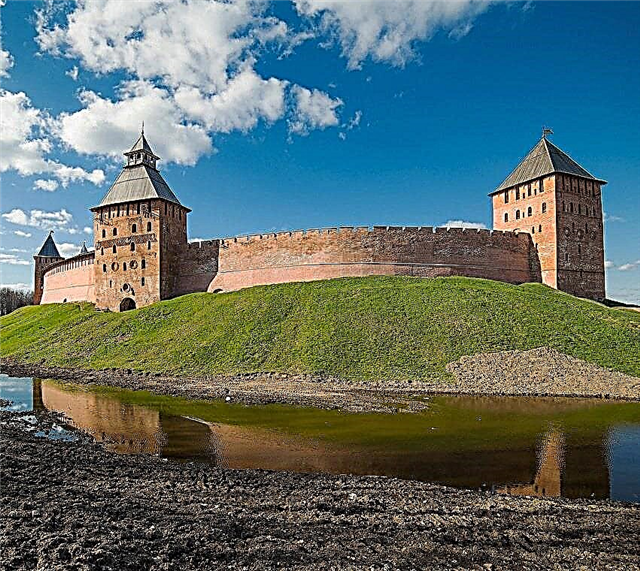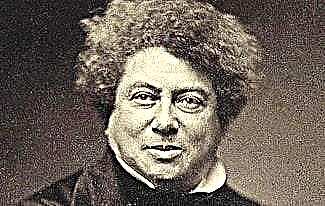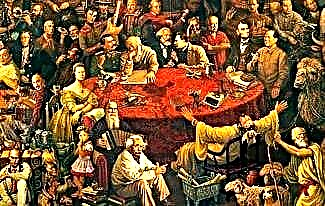Heinrich Müller (1900 - presumably May 1945) - Chief of the secret state police (4th department of the RSHA) of Germany (1939-1945), SS Gruppenfuehrer and Police Lieutenant General.
Considered one of the most mysterious figures among the Nazis. As the fact of his death was not precisely established, this led to numerous rumors and speculations about his whereabouts.

As the head of the Gestapo, Müller was involved in almost all crimes of the secret police and the security department (RSHA), personifying the terror of the Gestapo.
There are many interesting facts in the biography of Heinrich Müller, which we will talk about in this article.
So, here is a short biography of Mueller.
Biography of Heinrich Müller
Heinrich Müller was born on April 28, 1900 in Munich. He grew up in the family of the former gendarme Alois Müller and his wife Anna Schreindl. He had a sister who died immediately after birth.
Childhood and youth
When Heinrich was about 6 years old, he went to the 1st grade in Ingolstadt. After about a year, his parents sent him to a working school in Schrobenhausen.
Müller was a capable student, but the teachers spoke of him as a spoiled boy prone to lying. After graduating from the 8th grade, he began working as an apprentice at the Munich aircraft factory. At this time, the First World War (1914-1918) began.
After 3 years of training, the young man decided to go to the front. After completing military training, Heinrich began serving as an apprentice pilot. In the spring of 1918 he was sent to the Western Front.
An interesting fact is that the 17-year-old Mueller carried out the raid on Paris on his own, risking his own life. For his courage, he was awarded the Iron Cross of the 1st degree. After the end of the war, he worked for some time as a freight forwarder, after which he joined the police.
Career and government activities
At the end of 1919, Heinrich Müller served as a police assistant. After 10 years, he worked for the political police in Munich. The man monitored communist leaders, fighting pro-communist organizations.
Among his colleagues, Mueller did not have close friends, since he was a very suspicious and repulsive person. As a police officer during the biography of 1919-1933. he did not attract much attention to himself.

When the Nazis came to power in 1933, Heinrich's boss was Reinhard Heydrich. The following year, Heydrich encouraged Müller to continue serving in Berlin. Here, the man immediately became SS Untersturmführer, and two years later - SS Obersturmbannführer and Chief Inspector of Police.
However, in the new place, Mueller had a very tense relationship with the leadership. He was accused of wrongdoing and a tough fight against the left. At the same time, his contemporaries argued that for his own benefit, he would have persecuted the rightists with the same zeal, if only to get praise from his superiors.
Heinrich was also blamed for the fact that he did not tolerate those people around him who prevented him from moving up the career ladder. Moreover, he readily accepted praise for work in which he was not involved.
And yet, despite the opposition of colleagues, Müller proved his superiority. After a negative characterization came to him from Munich, he managed to jump over 3 steps of the hierarchical ladder at once. As a result, the German was awarded the title of SS Standartenfuehrer.
During this period of his biography, Heinrich Müller announced his exit from the church, wishing to meet all the requirements of Nazi ideology. This act upset his parents very much, but for their son, career was in the first place.
In 1939, Mueller officially became a member of the NSDAP. After that, he was entrusted with the post of head of the Gestapo. After a couple of years he was promoted to the rank of SS Gruppenfuehrer and Lieutenant General of Police. It was during this period of his biography that he was able to fully manifest his potential.
Thanks to his professional experience and high intelligence, Heinrich managed to collect a lot of useful information about each high-ranking member of the NSDAP. Thus, he had compromising evidence against prominent Nazis such as Himmler, Bormann and Heydrich. If necessary, he could use them for selfish purposes.

After the assassination of Heydrich, Müller became subordinate to Ernst Kaltenbrunner, continuing to actively support the repression against the enemies of the Third Reich. He mercilessly dealt with opponents, using various methods for this.
The Nazi provided himself with the appropriate documents and apartments for appearances, located near Hitler's bunker. By that time, he had affairs in his hands for each member of the Reich, access to which only he and the Fuehrer had.
Müller took an active part in the persecution and extermination of Jews and representatives of other nationalities. During the course of the war, he led many operations aimed at exterminating prisoners in concentration camps. He was responsible for the deaths of millions of innocent people.
To achieve his own goals, Heinrich Müller repeatedly resorted to fabricating cases. It is worth noting that Gestapo agents worked in Moscow, collecting useful information for their boss. He was a very cautious and prudent man with a phenomenal memory and analytical thinking.
For example, Müller did his best to avoid camera lenses, which is why there are very few Nazi photographs today. This was due to the fact that in the event of being captured, the enemy could not identify his identity.
In addition, Heinrich refused to tattoo his blood type under the left armpit, which all SS officers had. As time will tell, such a thoughtful act will bear fruit. In the future, Soviet soldiers will be very successful in calculating German officers with just such tattoos.
Personal life
In 1917 Müller began caring for the daughter of a wealthy publishing and printing house owner, Sofia Dischner. After about 7 years, the young people decided to get married. In this marriage, a boy Reinhard and a girl Elisabeth were born.
It is curious that the girl was not a supporter of National Socialism. However, there could be no question of divorce, since this negatively affected the biography of an exemplary SS officer. According to some sources, Henry had mistresses.
At the end of 1944, the man moved the family to a safer area in Munich. Sofia lived a long life, dying in 1990 at the age of 90.
Death
Heinrich Müller is one of the few high-ranking Nazis who escaped the tribunal at Nuremberg. On May 1, 1945, he appeared before the Fuehrer in full dress, declaring that he was ready to sacrifice his life for Hitler and Germany.
On the night of May 1–2, 1945, a Nazi detachment tried to break out of the Soviet ring. In turn, Henry refused to flee, realizing what the captivity could turn out to be for him. It is still not known exactly where and when Mueller died.

During the cleaning of the Reich Ministry of Aviation on May 6, 1945, the corpse of a man was found, in whose uniform there was a certificate of the Gruppenführer Heinrich Müller. However, many experts agreed that in reality the fascist managed to survive.
There were a variety of rumors that he was allegedly seen in the USSR, Argentina, Bolivia, Brazil and other countries. In addition, theories were put forward regarding the fact that he was an agent of the NKVD, while other experts stated that he could work for the Stasi, the secret police of the GDR.
According to American journalists, Mueller was recruited by the US CIA, but this information is not supported by reliable facts.
As a result, the death of a cautious and thoughtful Nazi still sparks a lot of controversy. Still, it is generally accepted that Heinrich Müller died on May 1 or 2, 1945, at the age of 45.
Photo by Heinrich Müller













